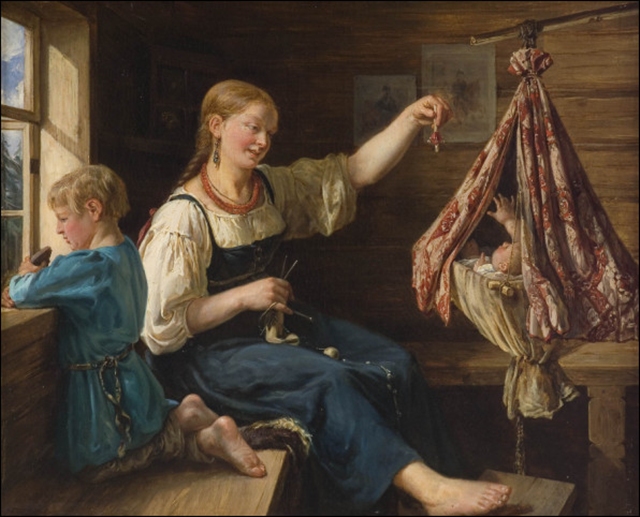|
A La Nanita Nana
"A la nanita nana" is a traditional Christmas time carol sung in honor of Baby Jesus, that has since become a popular lullaby in the Hispanic world. Origin The composer of the song for voice and piano ''La nana, balada al Niño Jesús'' was José Ramón Gomis, born in 1856 in Novelda, Alicante, Spain; the lyrics were written by Juan Francisco Muñoz y Pabón. The score was published in 1904. ''The Cheetah Girls'' version In 2006, a shortened version of the song was recorded by The Cheetah Girls (Raven-Symoné, Adrienne Bailon, Sabrina Bryan and Kiely Williams) accompanied by Mexican singer Belinda for the soundtrack album ''The Cheetah Girls 2'', for the film of the same name, whose interpretation also appears in the film. ''Coveralia.com'' ...
|
Villancico
The ''villancico'' (Spanish, ) or vilancete (Portuguese, ) was a common poetic and musical form of the Iberian Peninsula and Latin America popular from the late 15th to 18th centuries. Important composers of villancicos were Juan del Encina, Pedro de Escobar, Francisco Guerrero, Manuel de Zumaya, Juana Inés de la Cruz, Gaspar Fernandes, and Juan Gutiérrez de Padilla.Pope, "Villancico." Spain and the New World Derived from medieval dance forms, the 15th century Spanish villancico was a type of popular song sung in the vernacular and frequently associated with rustic themes. The poetic form of the Spanish villancico was that of an estribillo (or refrain) and coplas (stanzas), with or without an introduction. While the exact order and number of repetitions of the estribillo and coplas varied, the most typical form was a loose ABA framework, often in triple meter, ABA framework. The villancico developed as a secular polyphonic genre until religious villancicos gained popularity in ... [...More Info...] [...Related Items...] OR: [Wikipedia] [Google] [Baidu] |
The Cheetah Girls 2 (soundtrack)
''The Cheetah Girls 2'' is the soundtrack album to the 2006 Disney Channel Original Movie of the same name. It was released on August 15, 2006, by Walt Disney Records. The album was executive produced by Kenny Ortega, Debra Martin Chase, Raven-Symoné and Whitney Houston. It features appearances from Drew Seeley and Belinda. The songs on the soundtrack are a diverse blend of pop, R&B, Latin, and dance-pop. The album peaked at number five on the US ''Billboard'' 200 and has been certified platinum by the Recording Industry Association of America (RIAA), selling 1.4 million copies in the United States. Background and release Following the success of The Cheetah Girls' first soundtrack, with sales of over two million copies in the United States, ''The Cheetah Girls 2'' soundtrack was released on August 15, 2006, just ten days before the film premiered. A karaoke version of the album was released on October 10, titled ''Disney's Karaoke Series: Cheetah Girls 2''. A 2-disc specia ... [...More Info...] [...Related Items...] OR: [Wikipedia] [Google] [Baidu] |
Lullabies
A lullaby (), or cradle song, is a soothing song or piece of music that is usually played for (or sung to) children (for adults see music and sleep). The purposes of lullabies vary. In some societies they are used to pass down cultural knowledge or tradition. In addition, lullabies are often used for the developing of communication skills, indication of emotional intent, maintenance of infants' undivided attention, modulation of infants' arousal, and regulation of behavior. Perhaps one of the most important uses of lullabies is as a sleep aid for infants. As a result, the music is often simple and repetitive. Lullabies can be found in many countries, and have existed since ancient times. Etymology The term 'lullaby' derives from the Middle English ''lullen'' ("to lull") and ''by'' 'e''(in the sense of "near"); it was first recorded circa 1560. A folk etymology derives ''lullaby'' from "Lilith-Abi" (Hebrew for "Lilith, begone"). In the Jewish tradition, Lilith was a demon who ... [...More Info...] [...Related Items...] OR: [Wikipedia] [Google] [Baidu] |
18th-century Hymns
The 18th century lasted from January 1, 1701 ( MDCCI) to December 31, 1800 ( MDCCC). During the 18th century, elements of Enlightenment thinking culminated in the American, French, and Haitian Revolutions. During the century, slave trading and human trafficking expanded across the shores of the Atlantic, while declining in Russia, China, and Korea. Revolutions began to challenge the legitimacy of monarchical and aristocratic power structures, including the structures and beliefs that supported slavery. The Industrial Revolution began during mid-century, leading to radical changes in human society and the environment. Western historians have occasionally defined the 18th century otherwise for the purposes of their work. For example, the "short" 18th century may be defined as 1715–1789, denoting the period of time between the death of Louis XIV of France and the start of the French Revolution, with an emphasis on directly interconnected events. To historians who expand ... [...More Info...] [...Related Items...] OR: [Wikipedia] [Google] [Baidu] |
Spanish-language Christmas Carols
Spanish ( or , Castilian) is a Romance language of the Indo-European language family that evolved from colloquial Latin spoken on the Iberian peninsula. Today, it is a global language with more than 500 million native speakers, mainly in the Americas and Spain. Spanish is the official language of 20 countries. It is the world's second-most spoken native language after Mandarin Chinese; the world's fourth-most spoken language overall after English, Mandarin Chinese, and Hindustani (Hindi-Urdu); and the world's most widely spoken Romance language. The largest population of native speakers is in Mexico. Spanish is part of the Ibero-Romance group of languages, which evolved from several dialects of Vulgar Latin in Iberia after the collapse of the Western Roman Empire in the 5th century. The oldest Latin texts with traces of Spanish come from mid-northern Iberia in the 9th century, and the first systematic written use of the language happened in Toledo, a prominent city ... [...More Info...] [...Related Items...] OR: [Wikipedia] [Google] [Baidu] |

